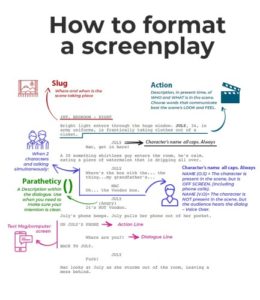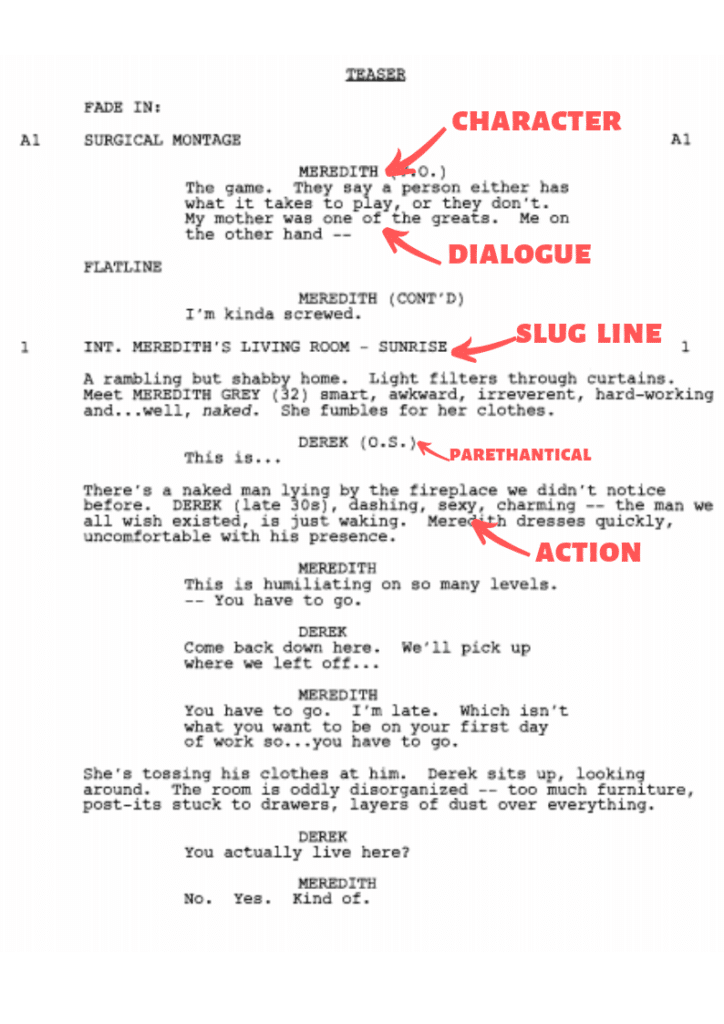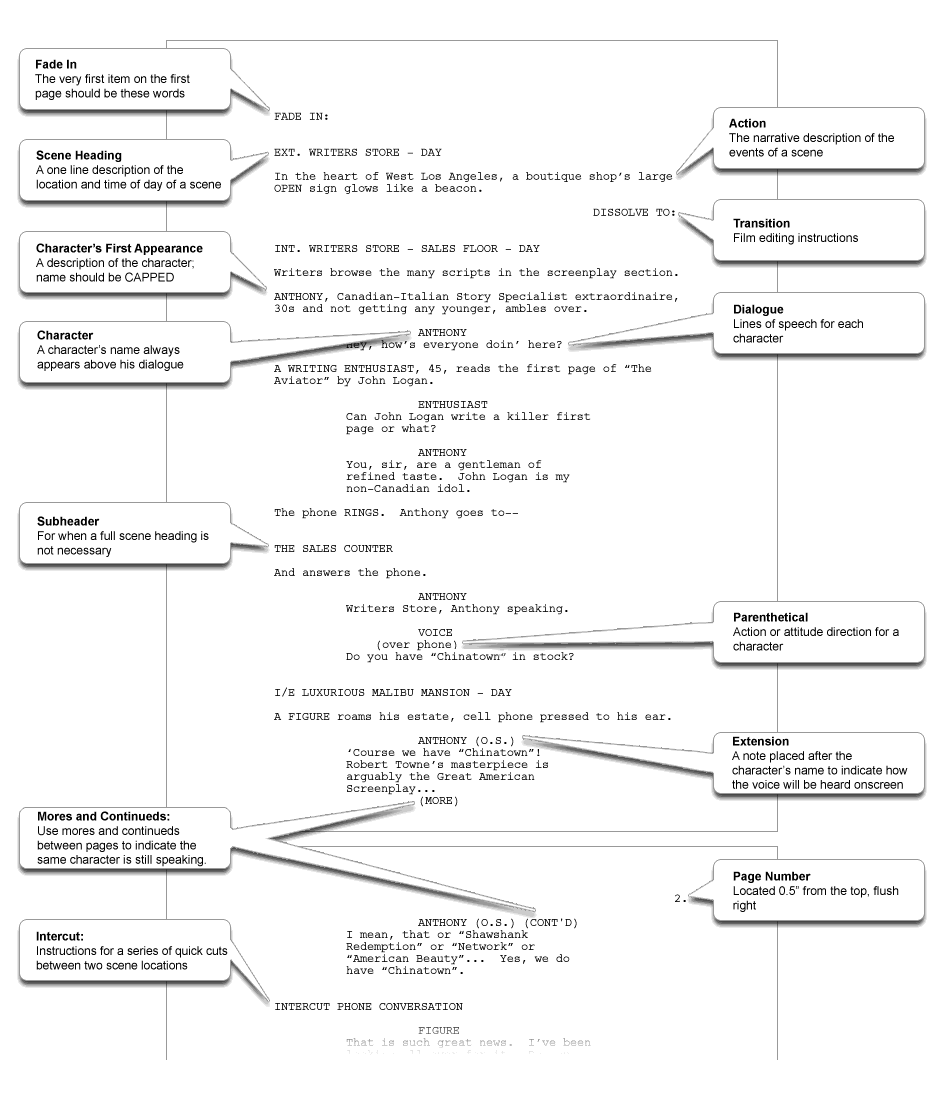
Authors who are adapting a novel or book into a screenplay, so they can enter a screenplay contest needs to know about Screenplay Format. Be aware that you will probably have to cut many supporting characters, subplots that don't connect to your main storyline, and almost all the description.
Writer Better Scripts gives you an example of a page with a script format, so you can see the layout.
Character's In Screenplay Format
- The first time a character appears in the script their name is shown in CAPS or BOLD or both.
- The character’s name in the action line, nothing needs to be done, just the use of their name.
- When the character speaks their name is in CAPS in the centre above the dialogue.
First Steps To Adapting A Novel Into A Screenplay Format
Experts in the screenwriting world say authors should make a list of the following:
- The world and setting of the story.
- The 5–8 main characters of the story including the protagonist and antagonist, what their respective backstories are and why/how they come together.
- What 5 things about your main protagonist/antagonist are the most important for an audience to know.
- The major core conflict of the story and why/how this occurs.
- The most visual and key scenes in the book that connect to how that conflict plays out.
- Your 10–20 Favourite lines of dialogue that drive the plot, are vital to the story or character development and that really shine.
- The major overarching theme of the book.
Read our other articles about adapting a novel to a screenplay.
Script Writing Example & Screenwriting Tips
Since a familiarity with the basics of the craft is half the battle, The Writers Store has provided you with resources, a screenplay example, and overview on how to write a screenplay to help you get up to speed on screenwriting fundamentals.
Combine that with the right screenwriting software, books and supplies, and you'll be ready to type FADE IN before you know it. In the most basic terms, a screenplay is a 90-120 page document written in Courier 12pt font on 8 1/2" x 11" bright white three-hole punched paper.
Here are the essentials every author who is adapting their novel into a screenplay should know:
- At its heart, a screenplay is a blueprint for the film it will one day become.
- A screenplay can be an original piece, or based on a true story or previously written piece, like a novel, stage play or newspaper article.
- Comedies tend to be on the shorter side (90 pages, or 1 ½ hours) while Dramas run longer (120 pages, or 2 hours).
- Wondering why Courier font is used? It's a timing issue. One formatted script page in Courier font equals roughly one minute of screen time. That's why the average page count of a screenplay should come in between 90 and 120 pages.
- Professionals on the set including the producer, director, set designer and actors all translate the screenwriter's vision using their individual talents.
- Since the creation of a film is ultimately a collaborative art, the screenwriter must be aware of each person's role and as such, the script should reflect the writer's knowledge. For example, it's crucial to remember that film is primarily a visual medium.
- As a screenwriter, you must show what's happening in a story, rather than tell.
- A 2-page inner monologue may work well for a novel, but is the kiss of death in a script.
- The very nature of screenwriting is based on how to show a story on a screen, and pivotal moments can be conveyed through something as simple as a look on an actor's face.
- The first ten pages of a screenplay are the most critical. A reader or producer usually has a ton of scripts flying across their desk and they don’t have time to read them all. They’ll give a screenplay ten pages to pull them in. If the script has interesting characters and the proper structure elements, they’ll likely continue reading. If not, it’s going in the rubbish.
- The screenplay is a unique format of writing.
- While it’s true that there are a number of elements common to any story regardless of medium, screenwriting is different in that every word of descriptive action must be written in the present tense and describe something the audience can see or hear.
This article takes a look at what a screenplay's structure looks like.
Mario O. Moreno and Kay Tuxford offer tips to authors who want to place their book in front of film producers in a screenplay contest need to know how to write a screenplay.
They say it's easy to feel intimidated by the thought of writing a screenplay. The rules! The formatting! The binding! Don't let the seemingly endless parade of screenwriting elements scare you away from writing your first script.
This article from Story Sense also offers advice on the script layout and screenplay format.
How Your Adapted Novel Will Look In A Screenplay Format
Here are some important images for authors adapting their novels into screenplays.





